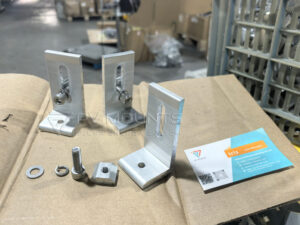1. Introduction
Aluminium mini rails are becoming the preferred solution for metal roof solar installations, offering a lightweight, durable, and efficient way to mount solar panels. Whether for residential ou commercial projects, understanding how to choose, install, and maintain mini rails can save time, reduce costs, and ensure long-term system performance. Unlike full-length mounting rails, mini rails attach directly to the metal roof using fewer components, reducing installation time while maintaining strong structural performance.
In 2025, more installers, EPC companies, and distributors are switching to mini rail metal roof systems because it help optimize logistics, lower overall balance-of-system (BOS) costs, and simplify layout planning on trapezoidal, corrugated, and R-panel metal roofs.
In this guide, we cover installation tips, roof compatibility, hardware selection, and frequently asked questions to help installers and EPC contractors optimize their solar mounting solutions. So your projects stay compliant, durable, and profitable.
2. What Are Mini Rails for Metal Roof Solar Systems?
Mini rails are aluminum mounting rails designed to secure solar panels on various metal roof types, such as corrugated, trapezoidal, and thin-gauge R-panels. They act as the backbone of metal roof solar mounting rails, connecting panels to the roof using self-tapping screws with EPDM washers for waterproofing. Each PV panel is supported by two or four mini rails depending on engineering requirements.
2.1 Key Functions of Mini Rails
Mini rails serve several essential functions:
- Provide a stable mounting point between solar modules and metal roof surfaces
- Distribute load across the metal roof sheet
- Simplify system layout compared to full-length rails
- Reduce material usage, cutting overall system weight
- Enable fast installation with pre-drilled holes and integrated EPDM pads (optional)
2.2 Benefits of Mini Rails
- Lightweight aluminum construction
- Corrosion-resistant for long-term performance
- Quick and flexible installation
- Compatible with multiple solar mounting attachment systems
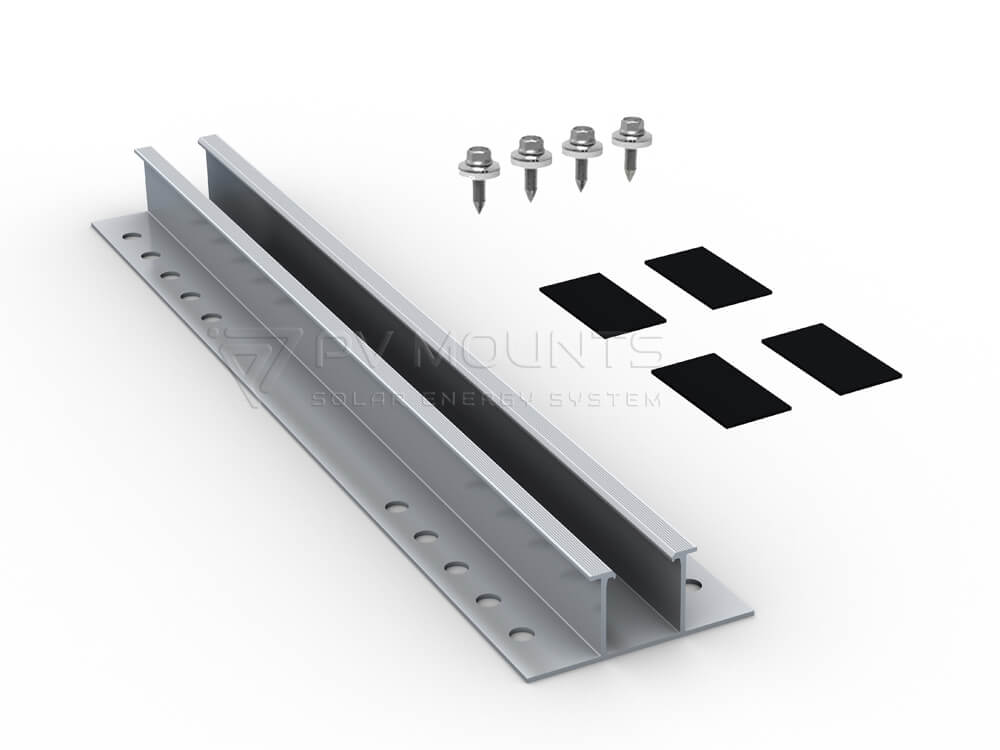
Mini rails are made almost exclusively from high-strength anodized aluminum, which provides excellent corrosion resistance—especially important in coastal regions, high-humidity climates, and tropical countries.
2.3 Where Mini Rails Are Used
Mini rails are well-suited for:
- Toits métalliques trapézoïdaux
- Corrugated sheets
- R-panel or ribbed metal roofs
- Industrial and warehouse roofs
- Residential lightweight metal roofs
They are not suitable for standing seam roofs (which use pinces pour joints debout), and not suitable for tile roofs(which use tile roof hook).
3. Why Mini Rails Are Popular in Modern Solar Installations
Mini rails are preferred by global installers for several reasons:
3.1. Lower Material and Shipping Costs
Compared with full-length rails (typically L=2100–4200mm), mini rails are small and compact. This means:
- Lower aluminum cost
- Lower freight cost (bulk shipping in cartons)
- Lower warehouse storage requirements
3.2. Faster Installation Time
Because the rails are small:
- They do not require long measuring and leveling
- They reduce the number of connections
- Installers can mount modules directly on pre-positioned mini rails
This increases installation efficiency—often by 20–40%.
3.3. Flexible Panel Layout
Mini rails allow installers to mount modules:
- In landscape
- In portrait
- Across irregular roof geometry
- Without worrying about long-rail alignment
3.4. High Compatibility
Most mini rail systems support:
- Aluminum module frames (30/35/40mm)
- Almost all mainstream module brands
This makes mini rails an ideal universal solution for international EPC projects.
4.Types of Mini Rails for Metal Roof Solar Systems
Mini rails come in multiple structural designs to match different roof surfaces, wind loads, and installation preferences. Choosing the correct type ensures long-term structural performance and safe module loading.
4.1 Standard Aluminum Mini Rails
These are the most widely used models in metal roof solar mounting. They feature:
- High-strength anodized aluminum
- Pre-drilled holes for fast fixing
- Universal compatibility with mid clamps and end clamps
- Simple structure and low cost
They are ideal for small to medium residential and commercial installations.
4.2 Reinforced Heavy-Duty Mini Rails
For high-wind and high-snow zones, reinforced versions are used. These often include:
- Thicker wall design
- Higher mechanical strength
- Larger contact area
- Better load distribution
They are recommended for:
- Typhoon-prone regions (Southeast Asia, Caribbean, Australia)
- Heavy snow load areas (Northern Europe, North America)
4.3 Mini Rails with Pre-Attached EPDM Pads (Recommend)
Some mini rail models include a bottom EPDM rubber pad that:
- Prevents water leakage
- Reduces vibration
- Increases friction between roof and rail
- Protects the metal sheet coating
This version is highly recommended for trapezoidal and R-panel metal roofs.
5. How to Select the Right Mini Rail Solar Panel Mounting System for Your Metal Roof Type
Mini rails are not “one-style-fits-all.” Each roof sheet requires specific mechanical matching to maintain structural integrity and ensure waterproofing.
5.1 Mini Rails for Trapezoidal Metal Roofs
Trapezoid roofs are the most compatible with mini rails. Key points:
- The rail must be fixed on the crest/high rib of the roof
- Use self-tapping screws with EPDM washers
- If rib height is low, consider longer mini rails for better load distribution
- Optional rubber pads increase waterproof reliability
5.2 Mini Rails for Corrugated Metal Roofs
Corrugated roofs can use mini rails only with a base plate/support bracket. Why?
Because the curved surface cannot provide a stable flat contact.
Correct combination:
- Mini rail + corrugated metal roof bracket
- Install on the crest
- Always use stainless-steel screws
5.3 Mini Rails for R-Panel / Ribbed Metal Roofs
R-panel roofs are widely used in industrial factories.
Key selection points:
- Choose mini rails with a large bottom area to match rib width
- Confirm rib height for safe screw penetration
- A double-screw configuration per rail is ideal for wind uplift zones
5.4 Engineering Factors to Consider
When selecting your mini rails, always check:
Wind Load (AS/NZS 1170, EN 1991)
Higher wind = thicker rail + longer screw + double fixation.
Charge de neige
If >1.0 kN/m² → use reinforced mini rail.
Module Size & Orientation
Large-format modules (182–210 cell) require stronger rails.
Distance Between Purlins
If purlins are too far apart → choose longer rails for stability.
Local Code Requirements
E.g.:
- UL 2703
- AS/NZS 1170
- CE marking
- ISO corrosion resistance compliance
6. Installation Guide: How to Install Mini Rails on Metal Roofs
A correctly installed mini rail system ensures the long-term performance of your solar array. Below is a practical, field-tested installation guide for roof technicians and EPC teams.
6.1 Tools Required
- Impact driver or drill
- Stainless-steel self-tapping screws (with EPDM washer)
- Torque wrench
- Measuring tape
- Module clamps (mid & end clamps)
- Chalk line
- Sealant or butyl tape (optional, depending on roof)
6.2 Processus d'installation étape par étape
Step 1 – Mark the Mounting Points
Use a chalk line to mark the row where the mini rails will be installed.
Ensure alignment with:
- The purlins
- Module orientation
- Fire pathway requirements
Step 2 – Place Mini Rails on the Metal Crest
Mini rails must always be mounted on the upper rib/crest, never in the valley of the roof sheet.
Reason:The crest gives maximum strength + waterproof safety.
Step 3 – Drill and Fix with Self-Tapping Screws
Use high-quality screws:
- Stainless steel 304/410
- EPDM bonded washer
- Correct penetration depth into the metal sheet + purlin
Torque specification: 14–16 Nm for 5.5mm screws (varies by brand).
Step 4 – Mount Solar Modules
Place your solar panels:
- Landscape: typically uses four mini rails
- Portrait: usually two rails
Secure modules using:
- Universal mid clamps
- Universal end clamps
Ensure proper grounding as per electrical code.
Step 5 – Final Inspection
Check:
- Screw tightening torque
- Module leveling
- No deformation on the metal rib
- No EPDM washer extrusion
- Rail alignment
This ensures long-term system durability.
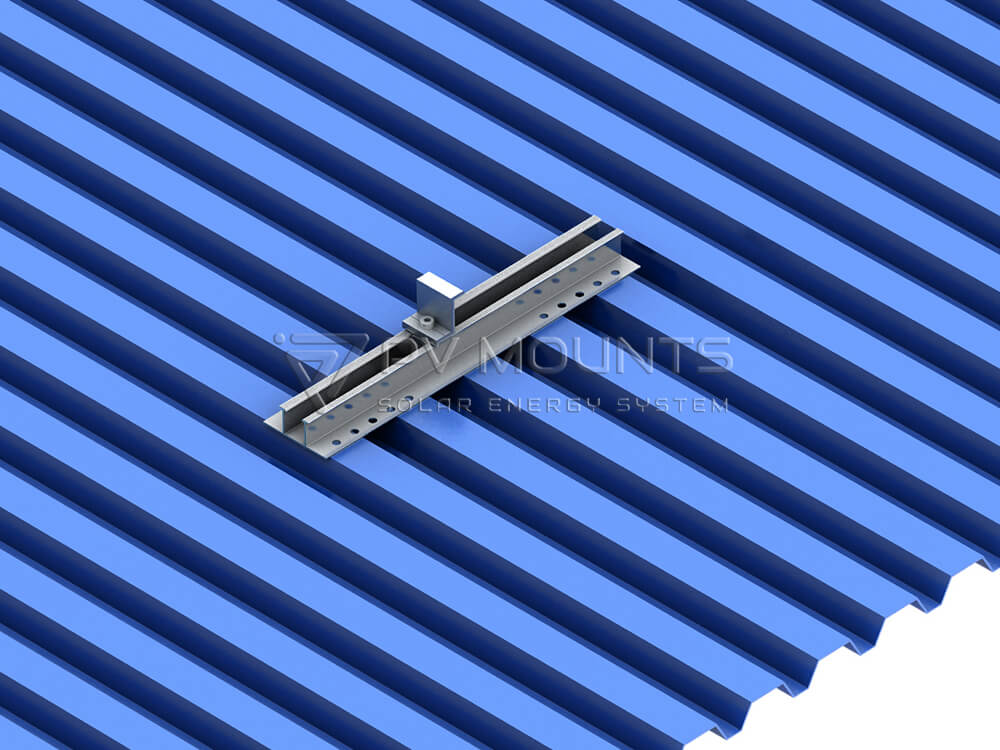
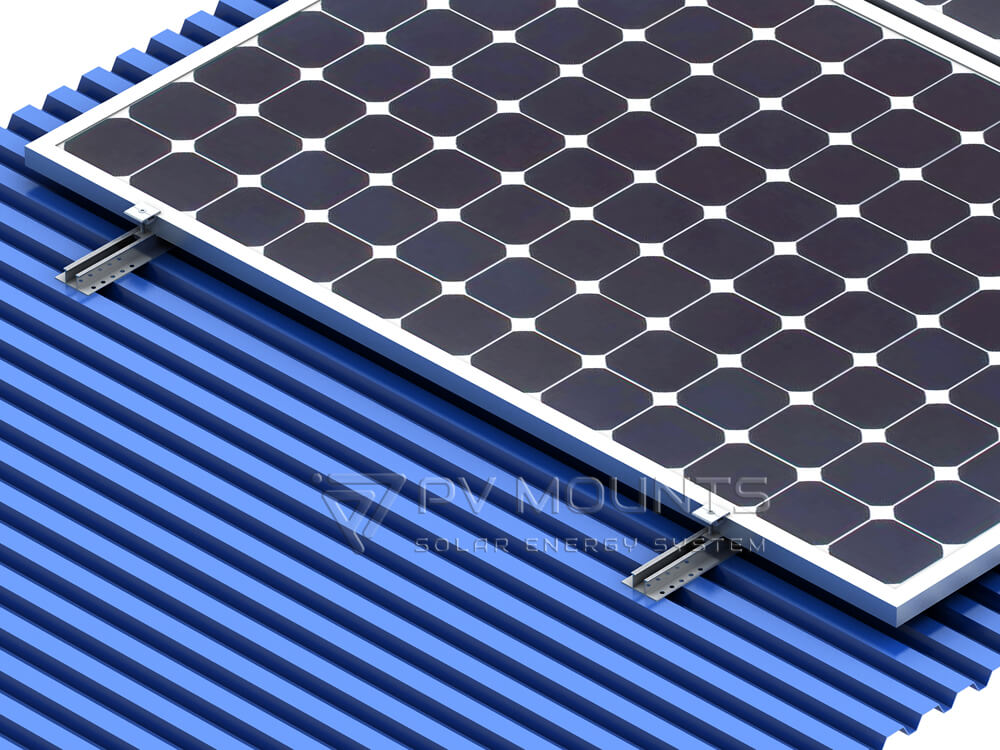
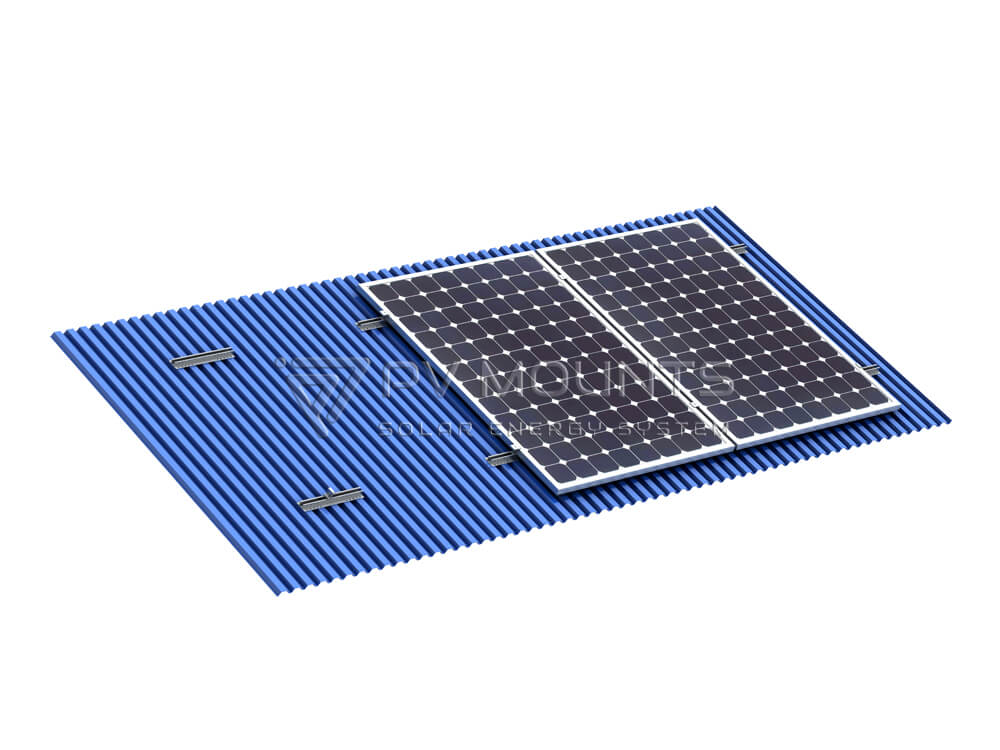
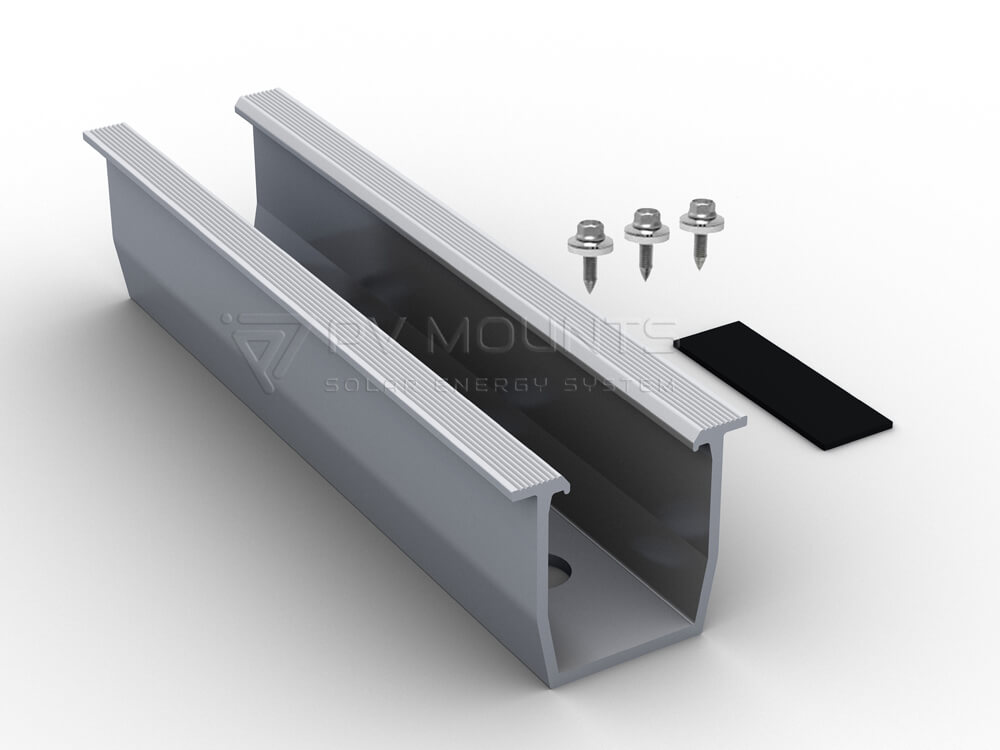
PVMOUNTS solar u-shaped mini rail for roof installation photo pvm-mn-03 (16)
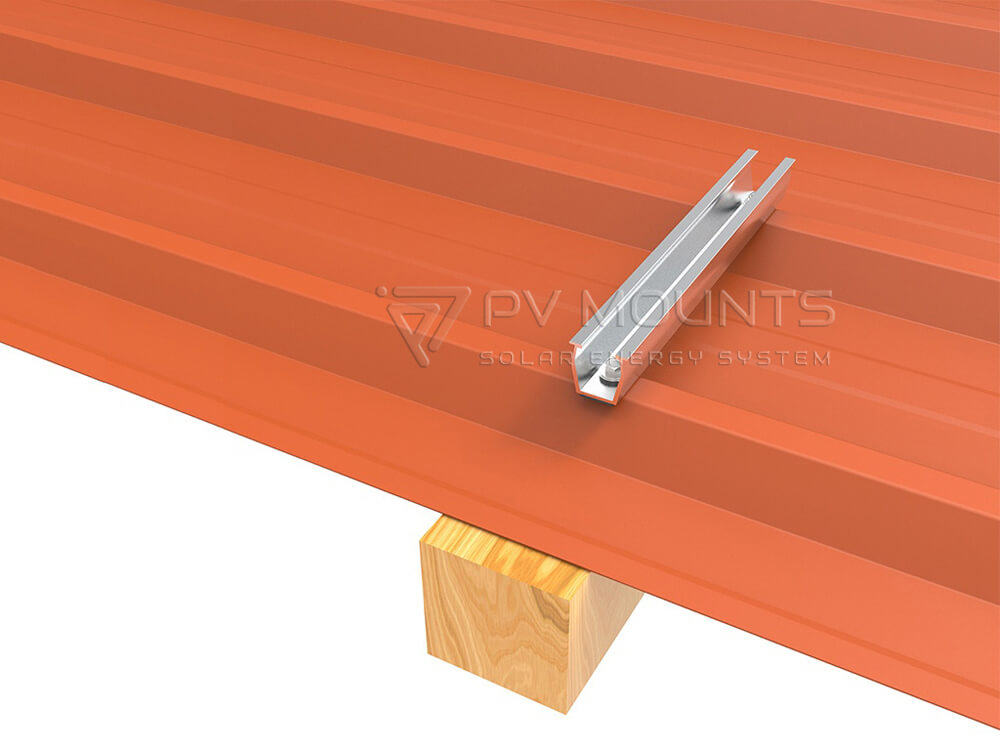

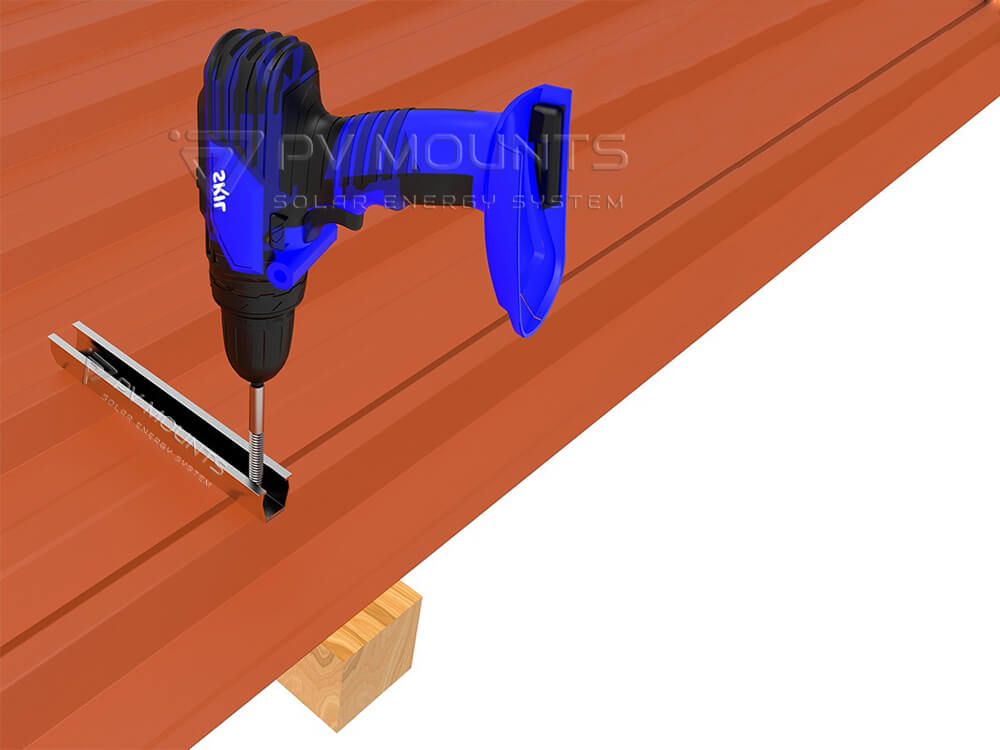

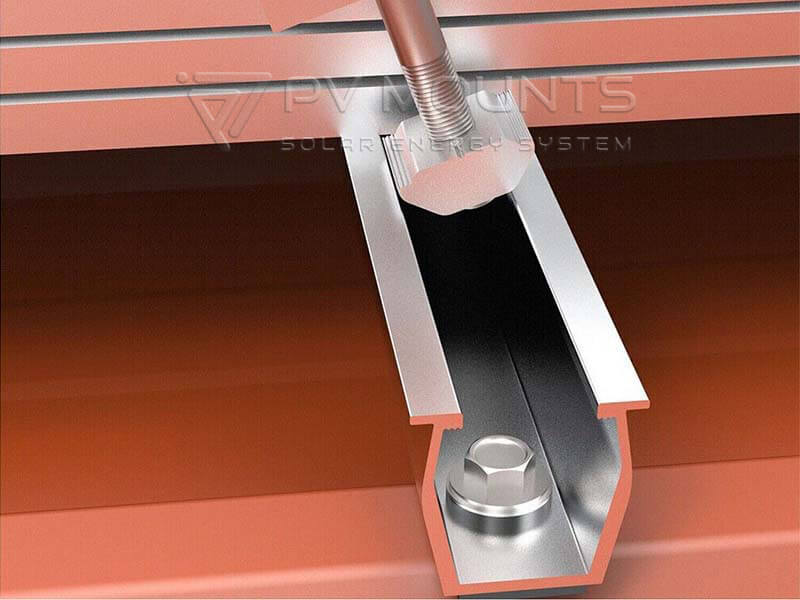

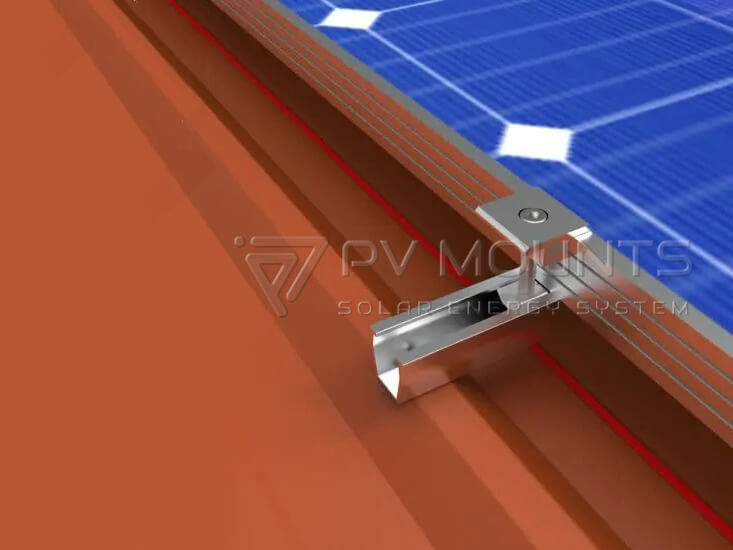
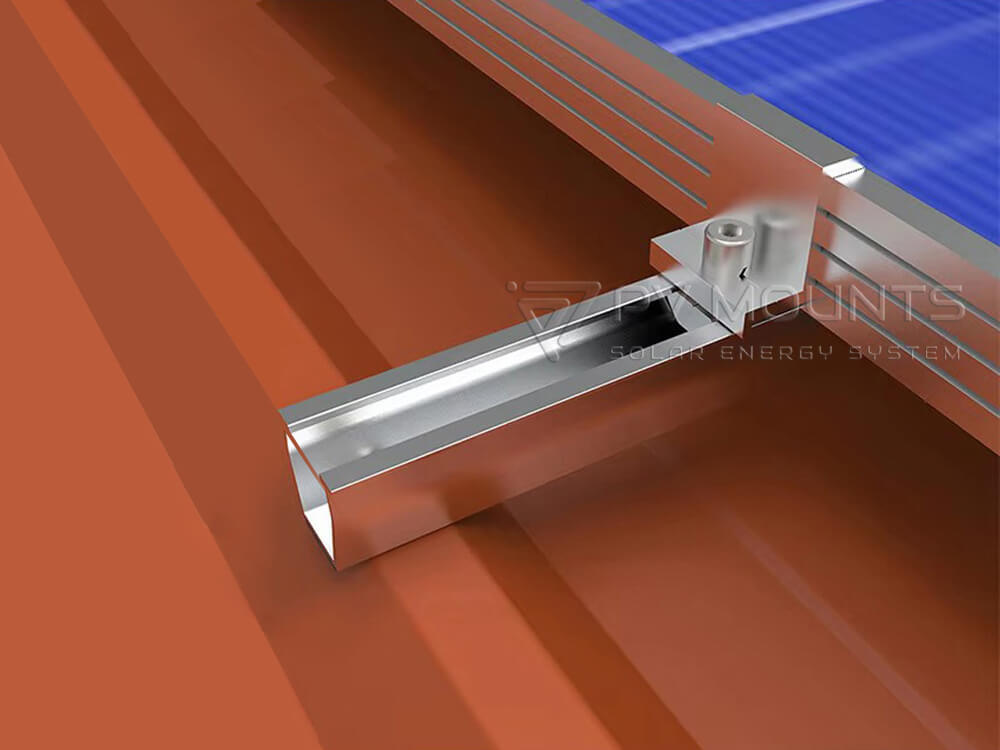
6.4 Maintenance & Corrosion Protection
- Use corrosion-resistant aluminum mini rails
- Inspect for loose screws or degraded EPDM washers
- Regular cleaning prevents debris buildup and maintains longevity
6.5 Mini Rail Layout Tips for PV Modules
- Calculate spacing based on module length and wind loads
- Maintain uniform distance for aesthetics and performance
- Ensure mid and end clamps align with PV modules
Image Suggestion: Top-view layout diagram of mini rails on corrugated roof
6.6 Residential vs Commercial Applications
Residential Mini Rails
- Optimized for small to medium rooftops
- Lightweight, fast install for homeowners or installers
Commercial Mini Rails
- Designed for larger projects with heavier module arrays
- Use heavy-duty rails for high wind/snow areas
- Plan layout carefully to optimize rooftop space
Image Suggestion: Side-by-side residential and commercial installations
7. Mini Rails vs. Other Mounting Options
Understanding differences helps installers select correctly for different roof structures.
7.1 Mini Rails vs. Full-Length Rails
| Feature | Mini Rails | Full-Length Rails |
|---|---|---|
| Coût | Lower | Higher |
| Installation | Faster | Slower |
| Shipment | Very compact | Bulky |
| Application | Toitures métalliques | All roof types |
| Structural Strength | Moderate | Highest |
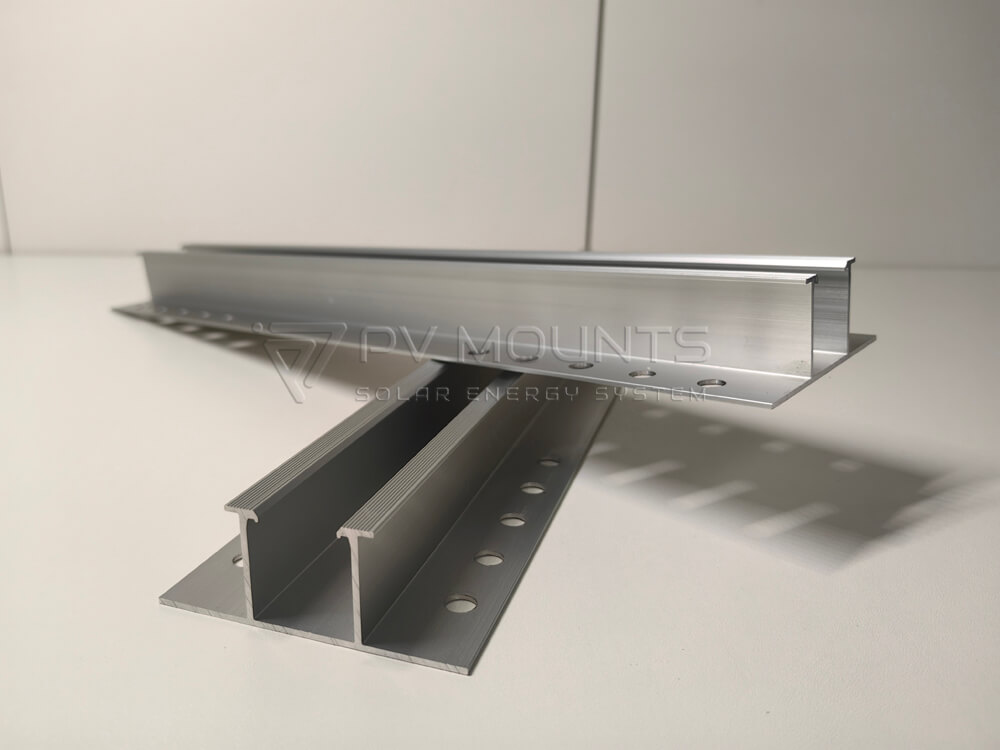
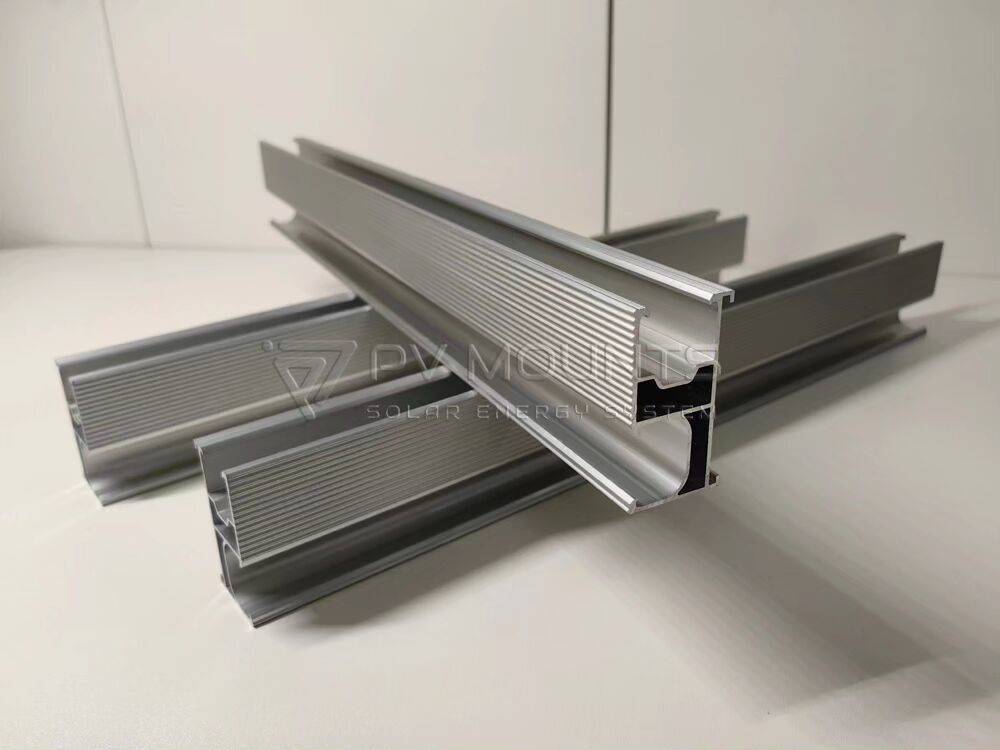
Mini rails are ideal when cost, logistics, and speed are the priority.
7.2 Mini Rails vs. Pieds L
- Mini Rails provide longer support area and more stable module alignment
- Pieds L are cheaper and used for simple metal roofs with rails
- Mini rails skip the “long rail” step → faster installation
7.3 Mini Rails vs. Pinces pour joints debout
- Standing seam clamps = non-penetration system
- Mini rails = require screws
They must NOT be mixed.
7.4 Mini Rails vs. Adjustable Tilt Kits
Use tilt kits only when:
- Additional angle is required
- The roof has low pitch
- You need higher energy yield
Mini rails are for flush mounting, not tilt.
7.5 Lateral Comparison: Mini Rails vs Other Metal Roof Attachments
| Feature | Mini Rails | Pieds L | Adjustable Tilt Kit | Pince pour joint debout |
|---|---|---|---|---|
| Roof Types | Corrugated / Trapezoidal / R-Panels | All metal types | Selected roofs | Standing seam only |
| Installation | Medium | Simple | Complex | Non-penetrating |
| Poids | Light | Medium | Heavy | Light |
| Coût | Moderate | Low | High | Moderate |
8. Common Mini Rail Installation Mistakes (and How to Avoid Them)
Even though mini rail systems are simpler than traditional full-length rails, installers still make several common mistakes. Avoiding these issues ensures long-term system stability and reduces callbacks.
❌ Mistake 1: Incorrect Screw Selection for Thin Metal Roofs
Mini rails must be fastened using self-tapping, self-drilling stainless steel screws with the proper length and thread design.Incorrect screws can lead to stripping, weak pull-out strength, or roof leaks.
Solution: Use manufacturer-recommended screws matching roof thickness (0.3–0.8 mm), and ensure the washer (EPDM) is UV-resistant and properly seated.
❌ Mistake 2: Misaligned Mini Rail Rows
Mini rails must stay perfectly parallel to ensure the PV modules sit square and evenly loaded.
Solution: Use a chalk line or laser guide to set the rail rows with consistent spacing according to module dimensions.
❌ Mistake 3: Underestimating Wind Loads
Short rails reduce leverage, but improper spacing or too short rails will create peak stress zones.
Solution: Use wind load calculation tools (ASCE 7-16, EN 1991) and follow manufacturer recommendations for:
- rail spacing
- fixing points
- screw count per mini rail
❌ Mistake 4: Not Accounting for Thermal Expansion
Aluminum mini rails expand and contract more than steel roofs.
Solution: Ensure clamps and rails allow adequate expansion room and avoid overly tight fastening against the module frame.
❌ Mistake 5: Poor Waterproofing Work
Most metal roofs rely on gasket screws or sealing washers. Incorrect torque or missing EPDM washers leads to long-term leaks.
Solution: Use torque-limited drivers, ensure EPDM washers are compressed but not crushed, and apply additional sealant for old roofs.
9. Maintenance Tips for Mini Rail Metal Roof Systems
Even though mini rail systems are low-maintenance, periodic checks extend system life and ensure ongoing safety.
✔ Annual Inspection Checklist
- Check module clamps for correct torque
- Ensure no screws are loosening due to vibration
- Inspect EPDM washers for aging or cracking
- Check mini rails for corrosion (rare with anodized aluminum)
- Inspect roof sheet conditions under the mounting area
✔ After Severe Weather
Inspect for:
- uplift movement
- screw tension loss
- rail deformation
- module frame scratches caused by debris
10. FAQs About Mini Rails for Metal Roof Solar PV Systems
1). What material is best for mini rails?
Anodized aluminum (AL6005-T5) is preferred for its excellent strength-to-weight ratio and corrosion resistance.
2). What is the best mini rail for corrugated metal roof?
Aluminum mini rails with corrugated brackets and EPDM washer screws provide reliable attachment and waterproofing.
4). How to calculate mini rail spacing for high wind areas?
Follow UL2703 and AS/NZS 1170 standards. Consider module length, roof pitch, and local wind load specifications.
5). Can mini rails be used on thin-gauge metal roofs?
Yes, but ensure purlin alignment and adequate load distribution.
6). Can mini rails be used for trapezoidal metal roofs?
Absolutely. Mini rails are widely used on trapezoidal or corrugated panels with 0.3–1.0 mm thickness.
7). What tools are needed for mini rail installation?
Impact driver, torque wrench, self-tapping screws with EPDM washers, optional sealant.
8). How do EPDM washers improve waterproofing?
They create a watertight seal under screws, preventing water ingress over time.
9). Are mini rails suitable for both residential and commercial projects?
Yes, lightweight rails are ideal for small rooftops; heavy-duty rails are preferred for commercial installations.
10). How do mini rails compare to L Feet or Adjustable Tilt Kits?
Mini rails are lighter and faster to install, but not suitable for standing seam roofs.
11). Are mini rails strong enough for high-wind regions?
Yes—if installed with proper screw quantity and spacing. Mini rails reduce uplift points due to low-profile design. Always check engineering guidelines for wind zones.
12). Will mini rails damage the roof?
No. When installed correctly with EPDM-sealed screws, mini rails maintain full waterproofing.
13). Are mini rails compatible with all module clamps?
Most mini rails support standard mid & end clamps, but always check the clamp base size to match mini rail channel width.
14). How long does installation take?
Mini rail systems reduce total labor time by 20–40%, depending on roof type and layout.
12. Why Choose PV Mounts Mini Rails?
- High-Quality Aluminum: Durable and corrosion-resistant, perfect for all metal roofs.
- Installation facile : Pre-drilled slots and EPDM washer screws make mounting fast and watertight.
- Wide Compatibility: Works with corrugated, trapezoidal, and R-panel roofs.
- International Standards: Complies with UL2703, AS/NZS, and other global regulations.
- OEM & Private Label: Customize with your own branding.
- Expert Support: We provide installation guides and technical help for smooth projects.
Contact PV Mounts today for your mini rail solution!
13. Conclusion: Why Mini Rails Are the Future of Metal Roof Solar Mounting
In summerize, Mini rails offer a perfect balance of:
- strength
- cost-efficiency
- fast installation
- reduced logistics
- metal roof compatibility
Aluminium mini rails provide an efficient, reliable, and corrosion-resistant solution for metal roof solar mounting. Proper selection, installation, and maintenance ensure long-term performance for both residential et commercial projects.
For EPCs, installers, and distributors, mini rails are becoming one of the most practical and reliable options for small, medium, and commercial metal roof solar systems.
If your project requires customized aluminum mini rails, corrosion-resistant anodizing, or rapid shipment, feel free to contact our engineering team.
Get your free consultation on metal roof mini rail solar mounting solutions today with PV Mounts!



